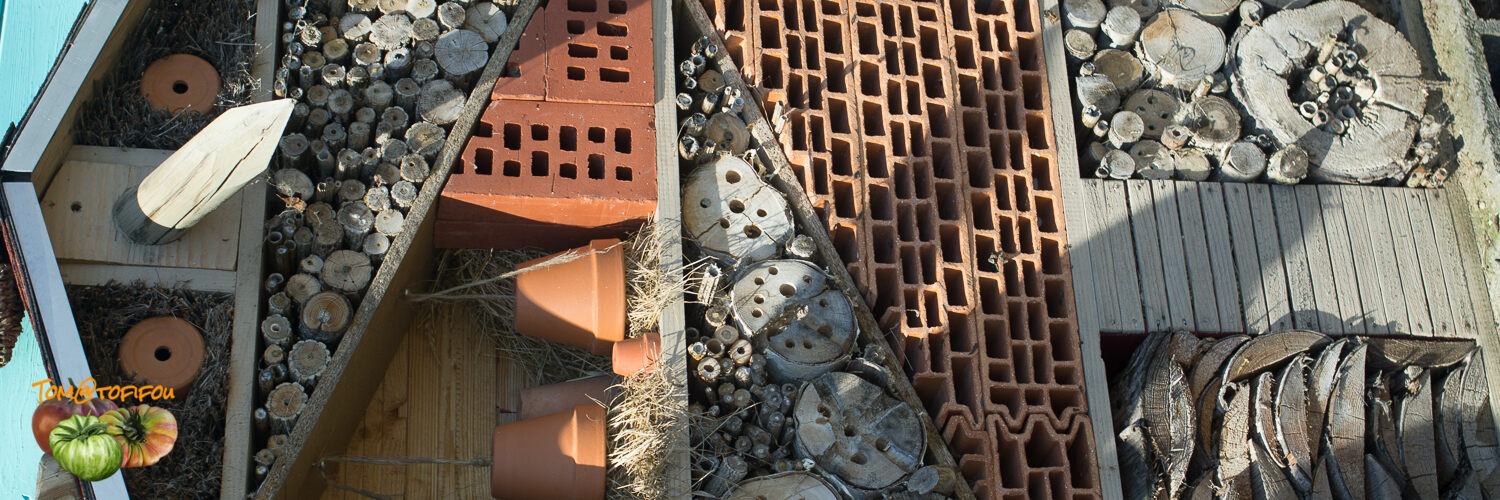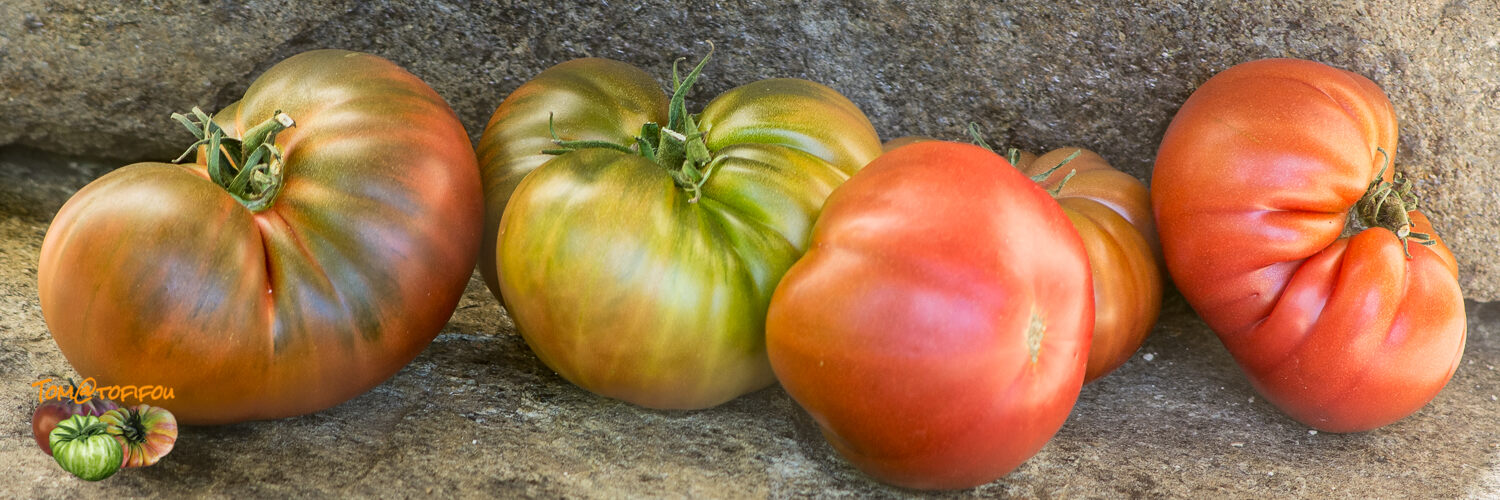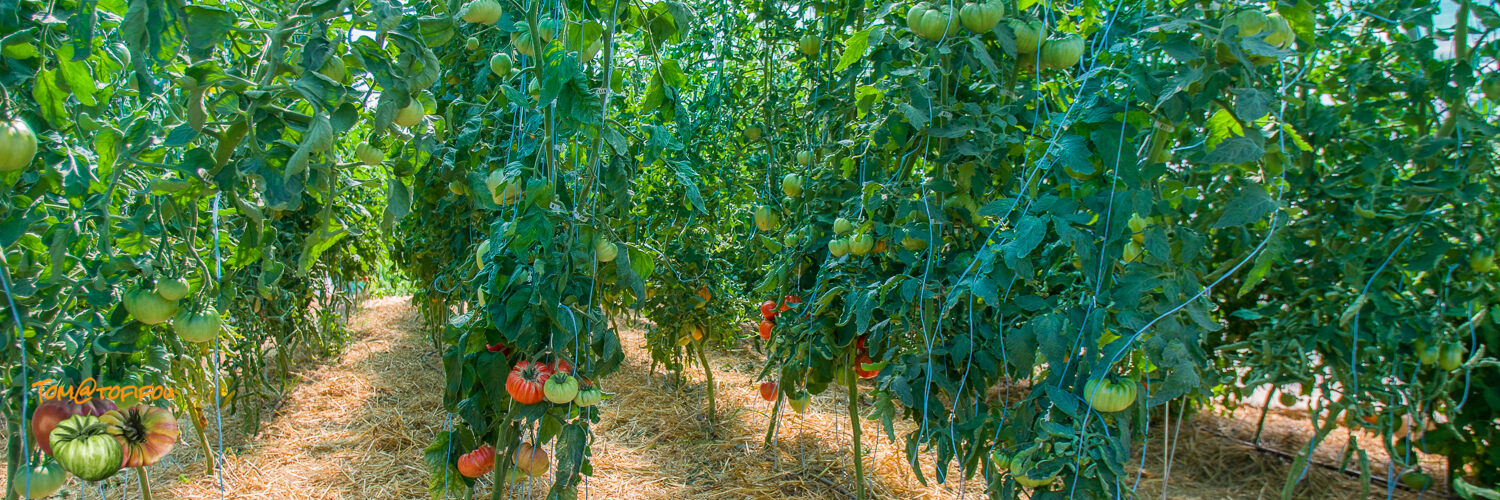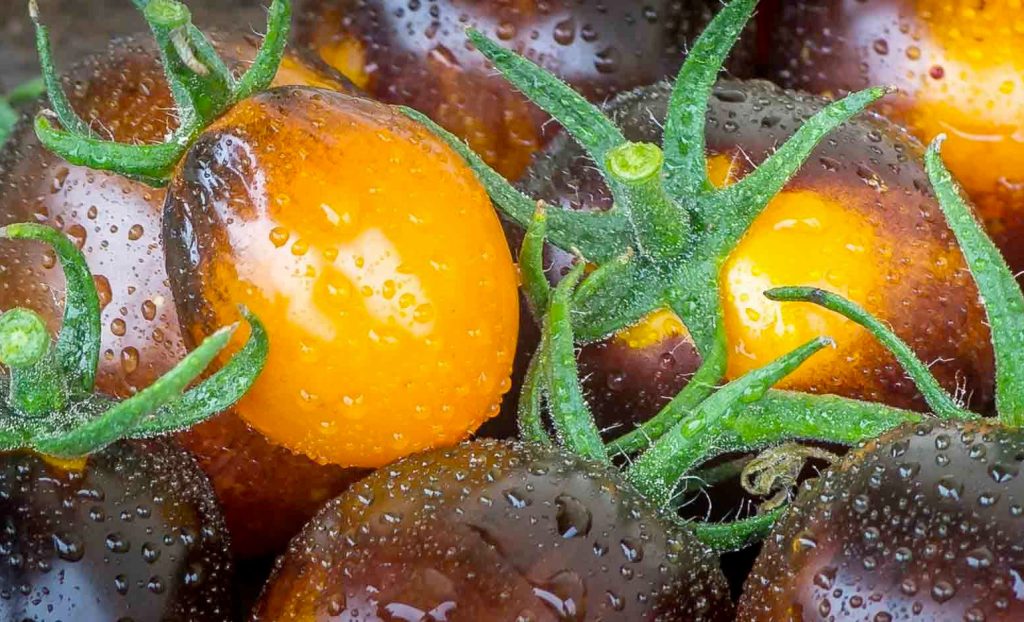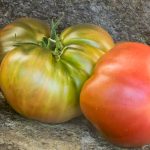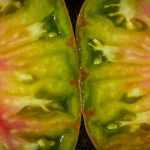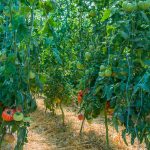
Variety Creation
There are three natural ways to create your own tomato varieties and "play creator in your garden", we will need a little bit of delicacy, common sense and a dash of luck that some will call feeling, karma, green thumb etc.
Cross-pollination of two selected varieties.
We will mainly deal with this method which is the most interesting at the home garden level.
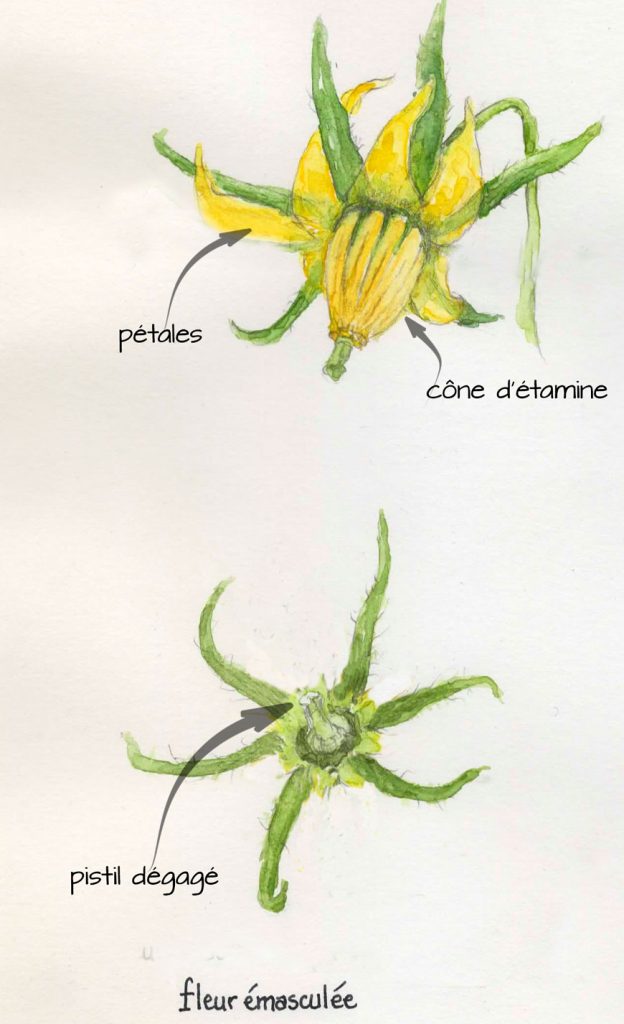
The more different fixed varieties are chosen both in shape, color, size, taste, the more spectacular the result may be. But it is necessary to keep reason and to know that it will be the finality of this manipulation: to have fun to create "monsters" or to improve existing varieties. For our example we will choose a variety A, big and with little taste, which will be the receptacle (the female parent) and a variety B, small and with sweet taste, which will provide the pollen (the male parent). The goal of this crossing is to obtain large tomatoes with a sweet taste.
.The flower of variety A will be pollinated when it is still in the floral bud stage at this stage we are sure that the anthers have not started to release pollen. The flower bud is emasculated to release the style. With the help of a small pair of pliers we remove the double cone formed by the staminate tube, the cylinder formed by the welded stamens, and the corolla of petals wrapped around the stamens. It may be necessary to remove a petal beforehand to facilitate the task, the operation is meticulous because it is necessary to avoid damaging the pistil which would reduce to nothing the chances of success of the operation. The pollen of the variety B, male parent, is deposited on the stigma of the variety A, female parent. There are two possible methods, with the help of a brush the pollen is transferred from one flower to the other or the stamens of parent B are used directly. For the pollen collection we prefer flowers that have just opened. As far as possible, all these manipulations should be done in calm weather, without wind, in the morning in the "cool". The use of small bags of protection is advised, even if the emasculated flowers, deprived of their stamens and petals to the bright colors, do not attract any more the insects. It is advisable to remove the other flowers from the bouquet, in order to limit competition. The names of the parents A and B should be carefully noted on a label that should be attached to the stalk of the fertilized flower. A few weeks later, if the operation is successful, the seeds will be taken from the ripe fruit. At this point, F1 seeds are obtained.
.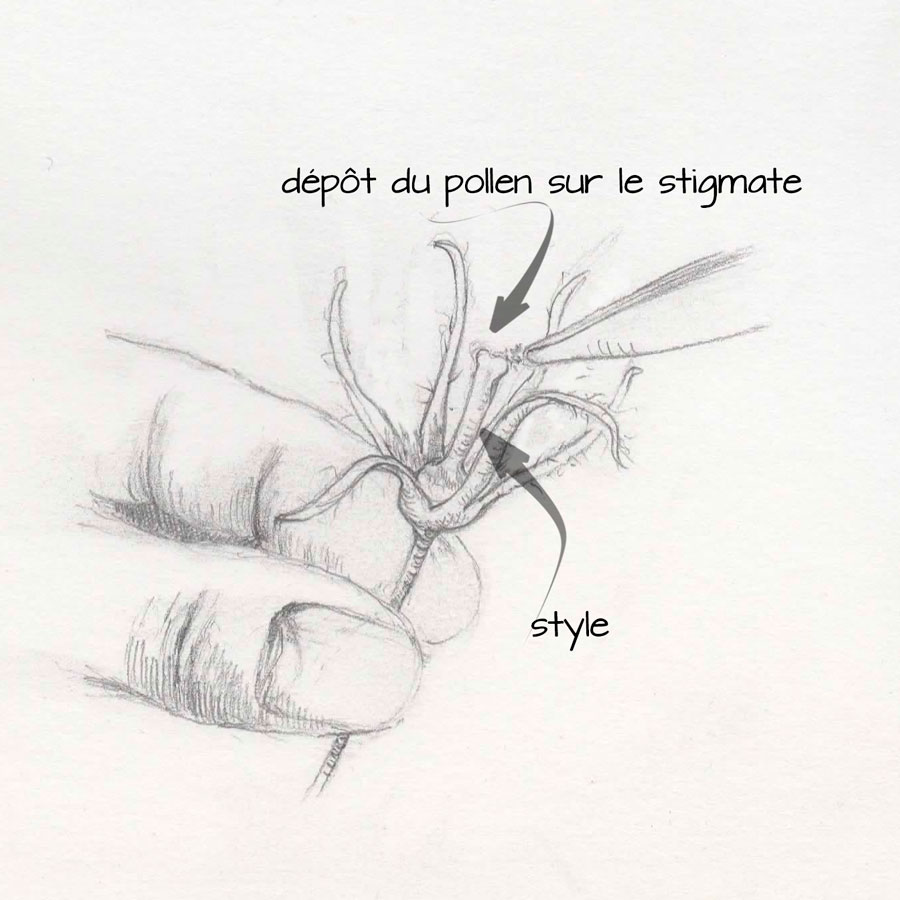
The following year the resulting seeds are reseeded and identical F1 hybrid plants with a mixture of the parental characters are obtained (indeed, since the parents are from fixed varieties and therefore homozygous, the gene pairs are identical). The result of this union depends on the dominant or recessive character of the genes.
For our example, we obtain 100% of plants giving small-sized tomatoes with a sweet taste, which amounts to saying that the genes responsible for sweet taste and small size are dominant in contrast, the genes responsible for bland taste and large size are recessive. Seeds are harvested from the resulting fruits that can be described as F2.
The following year the F2 seeds are sown again, and this is where everything gets complicated. As many plants as possible will be produced because the plants from F2 will show a wide variety of characteristics since the genes of the parents, now heterozygous, are expressed in a completely different way. It is at this moment that it is necessary to sort out the plants presenting the desired characteristics and which will be intended to be purified. On average, out of 1000 plants obtained, there will be, using our example: 9/16 plants with small fruits and sweet taste, 3/16 plants with large fruits and sweet taste, 3/16 plants with small fruits and bland taste and finally 1/16 plants with large fruits and bland taste. At this stage we select the large-fruited, sweet-flavored plants from which we will extract an F3 seed.
The F3 seeds are resown the following year to produce F3 plants.The F3 plants corresponding to the F2 plants selected the previous year will be sorted for the extraction of a new seed that will be named F4. This process will continue over several years, even a decade, to finally obtain a variety that can be called fixed, ie reproducing identically so homozygous.
Here below is a summary table of the evolution of the percentage of homozygous/heterozygous genes involved in a cross-hybridization of two fixed varieties, for a gene involved. Note that the percentage of heterozygous genes decreases by 50% in each subsequent generation.
| GENERATION | % HETEROZYGOTES | % HOMOZYGOTES |
| F1 | 100% | 0% |
| F2 | 50% | 50% |
| F3 | 25% | 75% |
| F4 | 12.5% | 87.5% |
| F5 | 6.3% | 93.7% |
| F6 | 3.1% | 96.8% |
| F7 | 1.6% | 98.4% |
| F8 | 0.8% | 99.2% |
| F9 | 0.4% | 99.6% |
| F10 | 0.2% | 99.6% |
| F11 | 0.1% | 99.9% |
| F12 | 0.05% | 99.95 |
| F13 | 0.025% | 99.975% |
| F14 | 0.0125% | 99.9875% |
Genetic interpretation:
Par conventions typographiques: on nommera le gène responsable de la grosse taille : G (si dominant) g (si récessif); on nommera le gène responsable de la petite taille : P (si dominant) p (si récessif); on nommera le gène responsable de la saveur fruitée : S (si dominant) s (si récessif); on nommera le gène responsable du goût fade : F (si dominant) f (si récessif).
Résultat de la fécondation croisée: 100% tomate petite à saveur sucrée. En supposant que les deux caractères sont codés par des gènes indépendants (situés sur deux chromosomes différents) , que pour chaque gène l'un des allèles est récessif et l'autre dominant, que les parents sont de race pure, donc homozygotes ( ils ont donc des paires de gènes identiques), ont pourra les identifier les gènes concernés de la manière suivante:
Parent mâle, petite tomate à saveur sucrée: (PP//SS) gène Petit dominant, gène Sucré dominant.
Parent femelle, grosse tomate saveur fade: (gg//ff) gène gros récessif, gène saveur fade récessif.
Le génotype des hybrides FI s'écrira de la manière suivante: (Pg//Sf). En F2 on aura a des individus avec 4 phénotypes différents dans les proportions suivantes:
-9/16 of small and sweet fruit: [P/;S/;] -3/16 of large and sweet fruit: [g/;S/;] -3/16 of small and bland fruit: [P/;f/;] -1/16 of large and bland fruit: [P/;f/;]
| Gamétes F1 | P/;S/ | P/;f/ | g/;f/ | g/;S/ |
| P/;S/ | PP//SS [P;S] | PP//Sf [P;S] | Pg//Sf [P;S] | Pg//SS [P;S] |
| P/;f/ | PP//Sf [P;S] | PP//ff [P;f] | Pg//ff [P;f] | Pg//Sf [P;S] |
| g/;f/ | Pg//Sf [P;S] | Pg//ff [P;f] | gg//ff [g;f] | gg//Sf [g;S] |
| g/;S/ | Pg//SS [P;S] | Pg//Sf [P;S] | gg//Sf [g;S] | gg//SS [g;S] |
In conclusion we have 2 parental phenotypes ([P;S] and [g;f] ) and 2 recombined phenotypes ([P;f] and [g: S] ) and 9 genotypes including 4 homozygous ([PP//SS] - [PP//ff] - [gg//SS] - [gg/ff]) and 5 heterozygous: ([PP//Sf] - [gg//Sf] - [Pg//SS] - [Pg//Sf] - [Pg/ff]).
The goal of this genetic manipulation is to obtain a tomato with a sweet flavor and a large size and thus a [g;S] phenotype, which corresponds to the following genotypes: [gg//Sf] for 2/3 and [gg/SS] for 1/3. We select these genotypes as F3 seed.
2. dehybridization of a natural hybrid
it sometimes happens that seeds of a well-determined variety produce plants that are totally different from the standard, for example a pink oxheart variety will generate a round, red tomato variety. There was a natural crossing (insect or other) the initial seed being in fact a F1 seed. The round and red tomato is in this case the F1 plant, the seeds extracted from this fruit will generate F2 seeds from which the selection process will be able to proceed in the same way as for the polinization of two selected varieties.
3.dehybridization of a commercial hybrid
Same as above but with a commercial hybrid variety, but the interest remains to be proven.
Biblio: Semences Kokopelli, de Guillaume Guillet. Wikipédia.
Sketches realized, graciously, by André Fage, watercolorist from Ambert.

